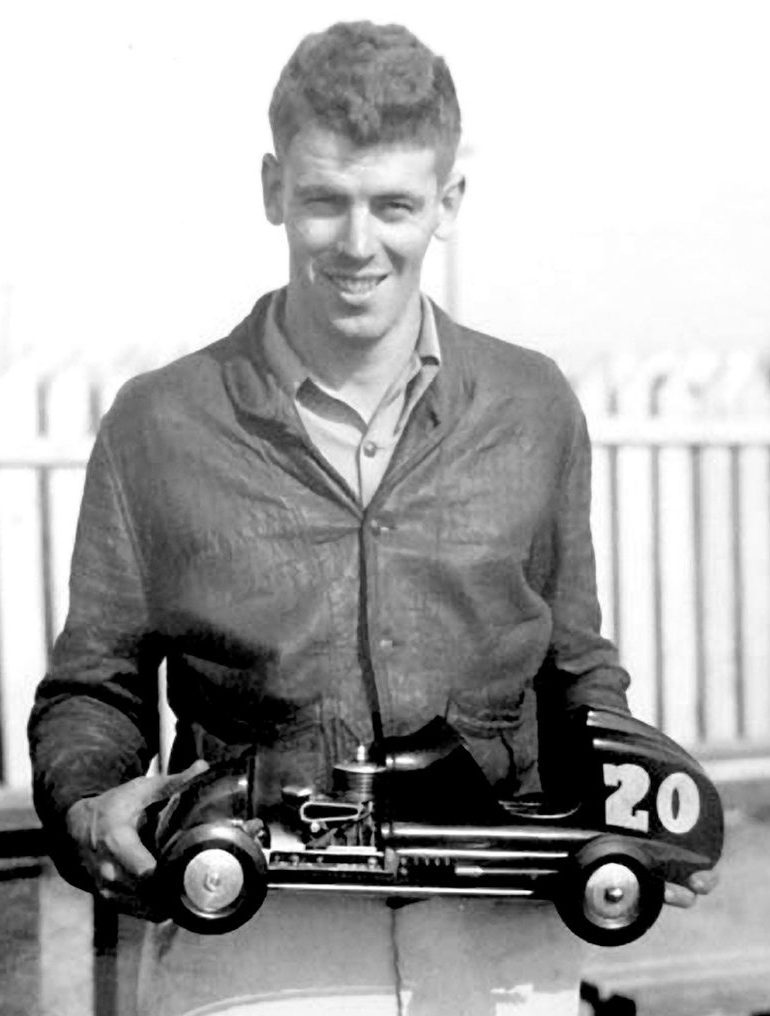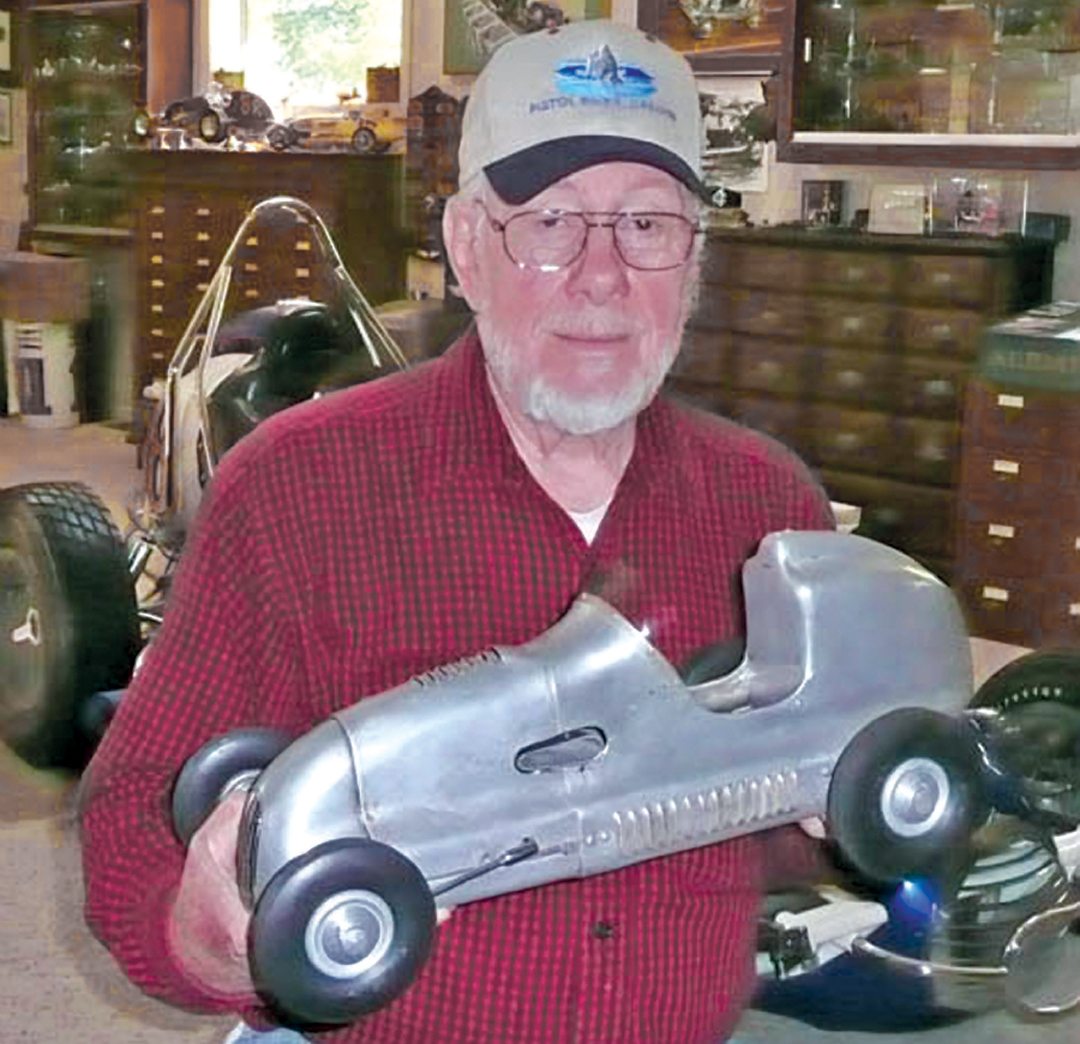The lunacy of automotive collecting has no bounds. My personal journey has taken me from Italian coach-builts to vintage racecars to French Panhard and Deutsch Bonnet and, most recently, hot rods. And all along the way I’ve been collecting literature in psychopathic quantities; if my house caught fire, you could see it from outer space! I don’t imagine my affliction is unique. We all start out with one interest or another. It’s all very innocent in the beginning. Then comes the neon objects, the service-station-o-bilia, hood ornaments, oil cans, spark plugs, milk trucks, and on and on. Oscar Wilde wrote, “The only way to get rid of temptation is to yield to it,” and thank the car gods he was right!
Lately, I’ve been fixating on something completely different. At first, it was only a mild curiosity; then came a bit of research. Now, things are suddenly looking quite grim and I fear I’m about to go mental—for tether cars. Yes, tether cars. Undeniably cool, hand-crafted, mechanical masterpieces, sculpted by many of the very same icons who built the great racings cars we all drool over. And the largest collection in the world can fit in a small room.
Miniature auto racing was born in Southern California in the late 1930s. Its origins can be traced to a small group of model airplane enthusiasts who were tired of driving their winged creations into the ground. They needed a place to run, and rail and cable tracks were born. In the case of rail tracks, as many as five cars raced simultaneously on a wooden oval with banked turns. These untethered cars raced on a metal rail, similar to later slot cars. Cable tracks were circular and were built with a smooth, flat, cement racing surface. Cars were run one at a time and roared around in a circle connected to a center post by cable.
Initially, the cars were built by hobbyists but a cottage industry quickly sprouted up with specialists concentrating on various components. Prewar engine masters such as Ira Hassad and Reginald Denny built perfect 10-cc, one-cylinder, two-stroke engines sipping a mixture of alcohol and castor oil through the cutest of carburetors. Others made precision racing tires, wheels, and magnetos. And they built everything from scratch. This was not the era of a kit-of-parts in a box. These cars were built one piece at a time: engine block, piston, connecting rod, spark plug—miniature and perfect. Like the full-sized racing cars that were being built at the same time, the best mini-bodies were rolled out from aluminum with often breathtaking results.
The top cars attained speeds of 80 mph before WWII. But when the boys came home, the hobby hit a new level in terms of materials and technology. Nitromethane appeared on the scene and speeds rose to as much as 150 mph. There was serious competition going on and big racing names were square in the center of the action. Dan Holley, Stanley Hiller, Roy Richter, and even the Duesenberg brothers were all involved in the big spindizzy.
Today, these cars are coveted by a group of collectors who appreciate not only the deep history of the sport but also the wizards who built these miniature marvels. One such collector is Don Edmunds, who has been collecting tether cars since the early 1960s. Edmunds, now 79, knows a thing or two about racing cars. As a driver he was Rookie of the Year at the Indy 500 in 1957. And he designed and built the prototype Cheetah with Bill Thomas. According to Edmunds, “I saw a couple of these little cars and thought they were kind of neat. I started reading Model Craftsman, and the more I learned the more I got hooked. I was particularly intrigued by the different approaches to building the miniature racing cars. In the beginning many of them were front wheel drive, which didn’t make a lot sense.”
Edmunds’s rail and tether car collection has grown far beyond the plan he never had. He won’t say how many cars he has, but his most coveted example is unquestionably the 1939 Modern Bullet built by racing legend Roy Richter. Richter was a well-known builder of full-sized racers and his cars scored numerous championships in the late ’30s and early ’40s. Much later, he created Bell Helmets and Cragar Equipment, but before all that he was building the best miniatures available.
Richter designed and built a specific chassis for his Modern Bullet miniature. Edmunds says that 30 to 50 examples may have been built, but only 5 are known to survive. Each car received a beautiful body that Richter hand-formed from aluminum. Edmunds said, “The body on my car is particularly desirable because the hood and nose were constructed as separate pieces; more commonly they were fabricated as a single piece.” Go power for Edmunds’s car came from a zippy Hassad-Schock engine, and the car ran on Voit tires. Edmunds’s car was originally built for Johnny Johnson with a front-drive configuration. At some point later, the car was converted to rear drive.
Edmunds’s “Bullet” has been in his collection since 1973 and it’s unlikely to find a new home anytime soon. But don’t despair and keep hunting. Somewhere in a nearby neighborhood, you might just find an original Modern Bullet hiding under an old newspaper—way in the back of a miniature garage.
Do you know of a Hidden Treasure? If so, send your photos and stories to Mark at [email protected]





